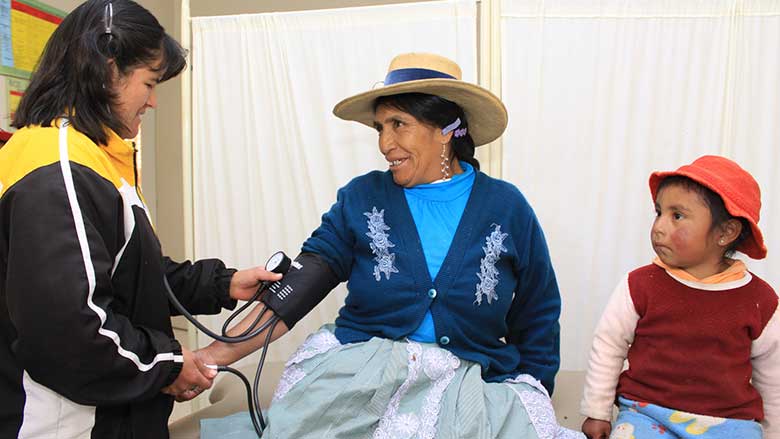Challenge
From 1990 onward, despite significant investment in basic education and health services that greatly increased coverage, Peru experienced a persistent lack of progress with respect to human development outcomes. By 2005, only 15 percent of Peru’s second-grade students were reaching grade-level sufficiency in literacy, and roughly half were unable to read. In terms of health, institutional births covered only 49.4 percent of rural births in 2007, leading to high maternal and neonatal mortality rates, and growth-monitoring check-ups of children younger than one year reached a dismal average of 3.3 visits per year, against the recommended standard of 12 visits. At the same time, 30 percent of Peruvian children aged five were chronically malnourished. Poor outcomes were particularly prevalent in rural areas. Low quality of education and health services were reinforced by a “low equilibrium trap,” with service providers, regulators, and users accepting inadequate services as due to poor or nonexistent accountability frameworks and incentives to improve them.
Approach
Drawing upon the accountability framework developed by the World Bank’s 2004 World Development Report, the Peru Results and Accountability (REACT) Development Policy Loan Series constitutes one of few pioneering efforts by the Bank’s Human Development (HD) Vice Presidency to focus squarely on the nexus between governance and service delivery, in this case, specifically, on making education, health, and nutrition services more accountable to the communities they serve. The program built on global and country-specific analytical work, and benefited from coordination with other Bank lending operations, both from the HD and non-HD practice areas. The REACT DPL series supported the participation and mobilization of various social actors to press for change in service quality, especially in poor rural communities (many with large indigenous populations), and encouraged the government to undertake extensive consultations with civil society on strategic direction and interventions. The Bank played a key role as a reliable and knowledgeable broker in this multi-stakeholder policy dialogue.



